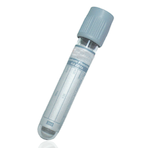Suitable Specimen Types
- Fluoride Oxalate
- Li Hep Plasma
Sample Processing in Laboratory
Usual.Sample Preparation
UsualTurnaround Time
1 daySample Stability
UsualGlucose Tolerance Test (OGTT)
General Information
The fasting blood glucose level (collected after an 8 to 10 hr fast) is used to screen for and diagnose diabetes. An oral glucose tolerance test (OGTT / GTT) may also be used to diagnose diabetes. To be certain of a diagnosis of diabetes two tests (either the fasting glucose or the OGTT) should be done at different times. The OGTT involves a fasting glucose measurement, followed by the patient drinking a glucose drink to 'challenge' their system, followed by another glucose test two hours later.
Gestational diabetes is a temporary type of hyperglycaemia seen in some pregnant women, usually late in their pregnancy. Almost all pregnant women are screened for gestational diabetes between their 24th and 28th week of pregnancy using a test for glucose in the urine. If glucose is detected in the urine, they are considered at risk of developing gestational diabetes and they will undergo further testing.
The OGTT is used for the diagnosis of Diabetes Mellitus and when previous investigations have indicated a fasting glucose of 6.1-6.9 mmol/L.
Patient Preparation
- Please ensure that stressful procedures are not performed within 48 hours before the GTT.
- The patient should be on a normal carbohydrate diet (more than 150g) for at least 3 days before the GTT. Any carbohydrate restriction ordered for dietary or other reasons must be reversed before the test.
- The patient is fasted overnight and allowed water or tea without sugar but no food or other liquids. No smoking is allowed during the morning of the test.
See the Clinical Guidelines section of the Laboratory Medicine websire for more information.
Notes
Appointments for glucose tolerance tests can be made via Diabetes Centre on 0121 424 0234. A service is available at Solihull - for information contact Laboratory Reception at Solihull on 0121 424 5531 / 0121 424 5526.
As of 25.07.19, GTTs are reported against pregnancy cut-offs
Reference Range
Levels are influenced by many factors including previous carbohydrate diet, drugs, gastric emptying time and gastrointestinal surgery, as well as circulating insulin levels.
The following criteria for adults and children are based on recommendation made by the World Health Organisation and have been adopted by Diabetes UK.
|
|
Glucose concentration in mmol/L |
|
|
Venous plasma |
Capillary plasma |
|
|
Diabetes mellitus
|
||
|
Fasting value |
≥ 7.0 |
≥ 6.1 |
|
2h after glucose load |
≥11.1 |
≥ 11.1 |
|
Impaired Glucose Tolerance
|
||
|
Fasting Value |
< 7.0 |
< 6.1 |
|
2h after glucose load |
≥ 7.8 & <11.1 |
≥ 7.8 |
|
Impaired Fasting Glycaemia
|
||
|
FastingValue |
≥ 6.1 & <7.0 |
≥ 5.6 & <6.1 |
|
2h after glucose load |
< 7.8 |
< 7.8 |
The same criteria are used for pregnant patients but those fulfilling the criteria of impaired glucose tolerance and diabetes mellitus have gestational diabetes mellitus (GDM).
'Diabetic' levels of glucose are not infrequently found in stressed individuals.
Specifications
- EQA Scheme?: Yes
